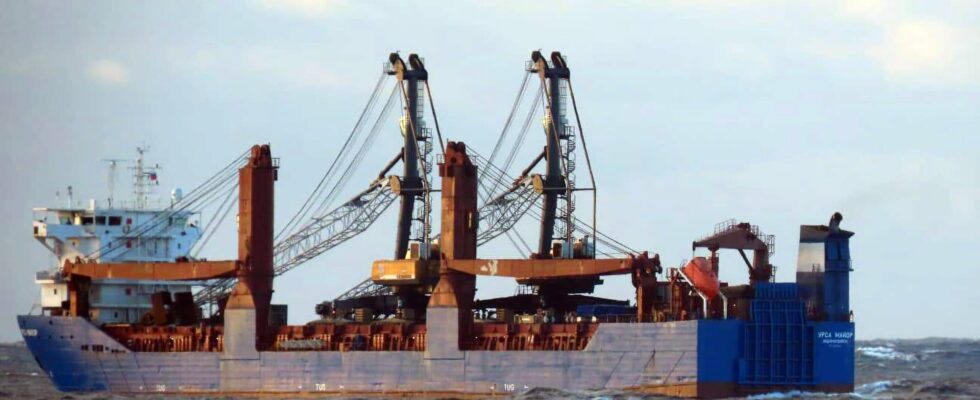The sinking of the Russian cargo ship Ursa Major in the Mediterranean Sea is due to a “terrorist attack”, the company that owns the ship, which reports to the Russian Ministry of Defense, said on Wednesday, December 25, without supporting its comments. The Oboronloguistika company said in a statement, cited by Russian state agenciesthat she believed that a “targeted terrorist attack” had been carried out “on December 23, 2024 against the ship Ursa Major”, without indicating who allegedly carried it out, or why.
“Three consecutive explosions” sounded, which caused the ship to roll and “water to enter,” she added, citing testimonies from survivors. Oboronloguistika did not explain what elements she relied on to qualify the sinking as a “terrorist attack”.
The massive ship Ursa Major sank overnight from Monday to Tuesday in international waters in the Mediterranean Sea, between Spain and Algeria. Two sailors are missing after the sinking of this boat which had 16 crew members on board.
The Russian Foreign Ministry had already stated on Tuesday that the ship’s sinking occurred after “an explosion in its engine room”. A section of the Russian Investigative Committee, the body responsible for the main investigations in the country, announced on Tuesday the opening of an investigation for “violation of safety rules” in maritime transport, without further details.
According to Spanish sea rescue services, Ursa Major “issued an alert call” during the night from Monday to Tuesday, about 105 km from the coast of the Spanish city of Almeria, against a backdrop of “bad weather conditions”.
American sanctions
The cargo ship is the largest vessel of the Oboronloguistika company, which reports to the Russian Defense Ministry and also provides civilian transportation and logistics services. The Ursa Major and its owner company were placed under American sanctions in May 2022, after the start of the Russian assault in Ukraine, according to a press release from the State Department.
According to Oboronloguistika, Ursa Major was transporting harbor cranes and hatch covers for icebreakers to Vladivostok (Russian Far East). The company, however, assured Wednesday that the ship was not “overloaded”, regretting that this hypothesis had been mentioned by “a number of media”.
The cargo ship left Saint Petersburg (northwest Russia) on December 11 and was due to arrive in Vladivostok on January 22, according to the MarineTraffic.com website. Oboronloguistika affirmed on December 20 that the voyage of his ship participated in the development of the “Northern Maritime Route”. This maritime route in the Arctic has been developed for years by Russia, which hopes to use it as a new commercial circuit linking Europe and Asia, in particular to deliver its hydrocarbons.
Sparta and Syria
Ukrainian military intelligence (GUR) nevertheless claimed on Monday, before the ship’s sinking, that a Russian cargo ship called Sparta had encountered a technical problem off the coast of Portugal. Ursa Major was formerly called Sparta III, according to the Oboronloguistika website. The Ukrainian information, however, has not been confirmed, and it could be two different ships, because Oboronloguistika also has another boat named Sparta. The latter also sails in the Mediterranean Sea, bound for Port Said in Egypt, according to the specialist site Vessel Finder. Ukrainian military intelligence said Sparta was heading to Syria to evacuate “weapons and equipment.”
Moscow has two military bases in Syria, the naval base of Tartous and the military airfield of Hmeimim. These infrastructures are key because they allow Russia to carry out operations in the Middle East, in the Mediterranean basin and as far as Africa.
The flight of Bashar al-Assad, overthrown in December and taking refuge in Moscow, dealt a heavy blow to Russia’s ambitions, especially as it also illustrates the weakening of its regional ally, Iran. The fate of Russian bases in Syria has since remained unresolved.
